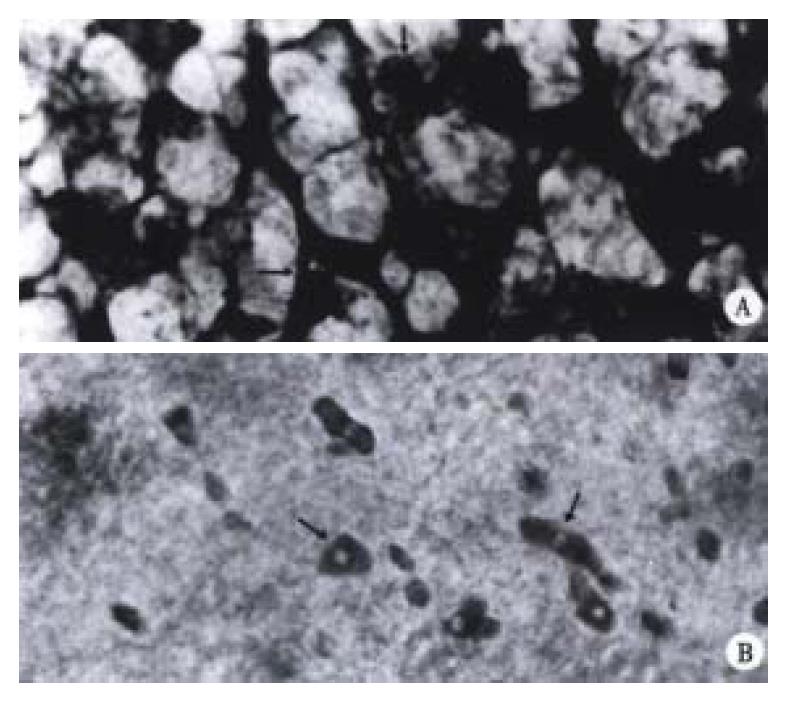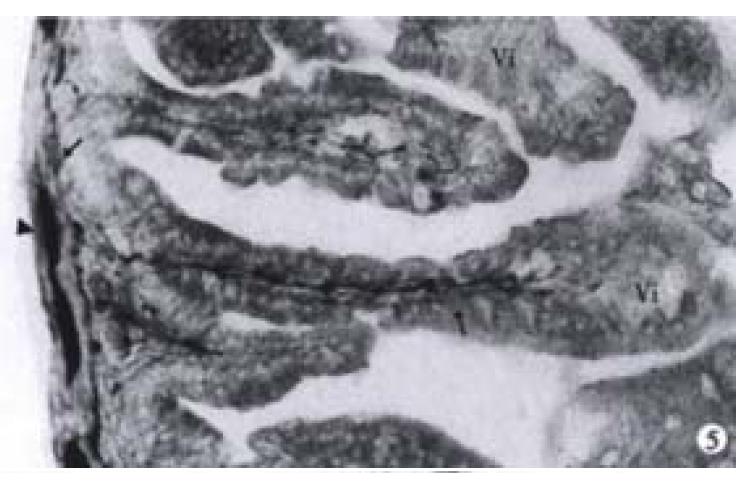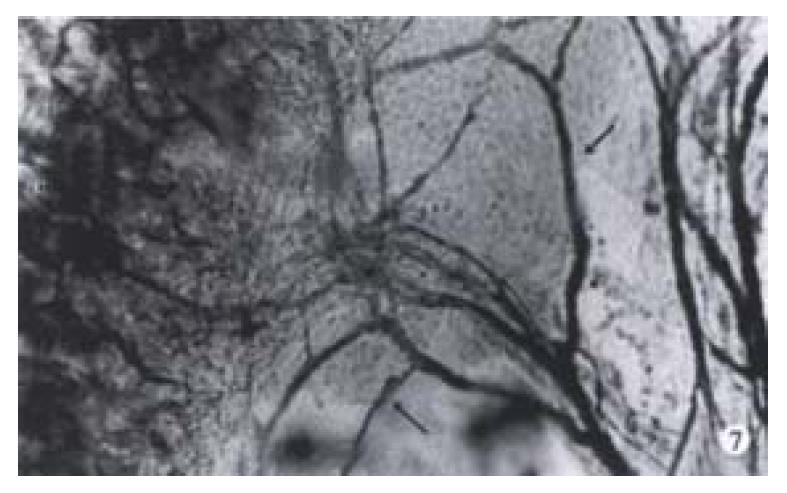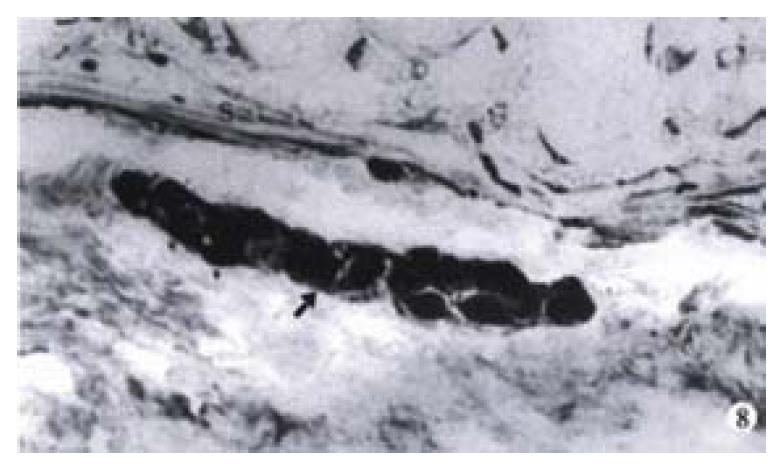Copyright
©The Author(s) 2001.
World J Gastroenterol. Feb 15, 2001; 7(1): 16-21
Published online Feb 15, 2001. doi: 10.3748/wjg.v7.i1.16
Published online Feb 15, 2001. doi: 10.3748/wjg.v7.i1.16
Figure 1 a.
The chromosome of normal mice. b. The chromosome of trisomy 16 mice: two Rb metecentric chromosomes (↑) and 41 chromosome arms. × 1000
Figure 2 The survival rate of trisomy 16 mice with different embryonic days (ED).
Figure 3 a.
Myenteric plexus of normal littermates at ED 15. The nerve meshworks had regular meshes with many neurons (↑). × 400 b. The colon of trisomy 16 mice contained some neurons (arrow) with different staining and size at ED15. × 400
Figure 4 At ED 18, the myenteric plexuses of trisomy 16 mice and their normal littermates in whole mount preparation.
× 250 A. The developed myenteric plexus with primary (long arrow), secondary (arrow) and tertiary (arrowhead) strands were displayed in the colon of normal littermates. The primary strands were composed of broad fiber bundles and numerous ganglia with longitudinally arranged meshes. B. The myenteric plexus of trisomy 16 mice was poor with less ganglia containing some neurons (arrow) at different staining.
Figure 5 At ED 18, the nerve fibers (long arrow) stretching from the enteric plexuses reached the gut villi (Vi).
The myenteric (arrowhead) and submucosal (arrow) plexuses were clear. × 160
Figure 6 Aganglionic segment of trisomy 16 mouse colon.
× 160 B. The colon of normal littermate with ganglia (arrow). × 100
Figure 7 The myenteric nervous fibers (arrow) were detected in the colon (C) mesentery of trisomy 16 mice.
× 160
Figure 8 The submucosal ganglia (arrow) of normal colon of human.
S: submucosal muscular layer. × 100
Figure 9 The aganglionic colon of Hirschprung’s disease.
Abundant proliferation of nerve fibers (large arrow) was found in the stenosed segment of colon. A wave-like nerve fiber (arrow). × 100
- Citation: Li JC, Mi KH, Zhou JL, Busch L, Kuhnel W. The development of colon innervation in trisomy 16 mice and Hirschsprungs disease. World J Gastroenterol 2001; 7(1): 16-21
- URL: https://www.wjgnet.com/1007-9327/full/v7/i1/16.htm
- DOI: https://dx.doi.org/10.3748/wjg.v7.i1.16

















